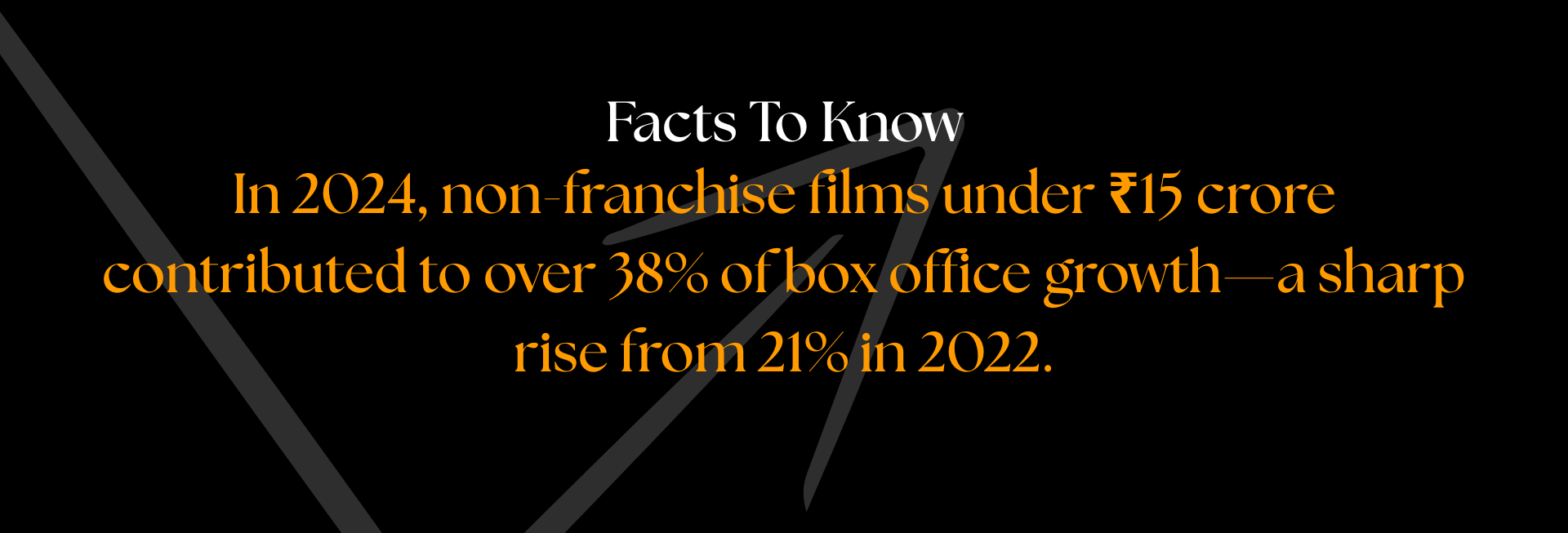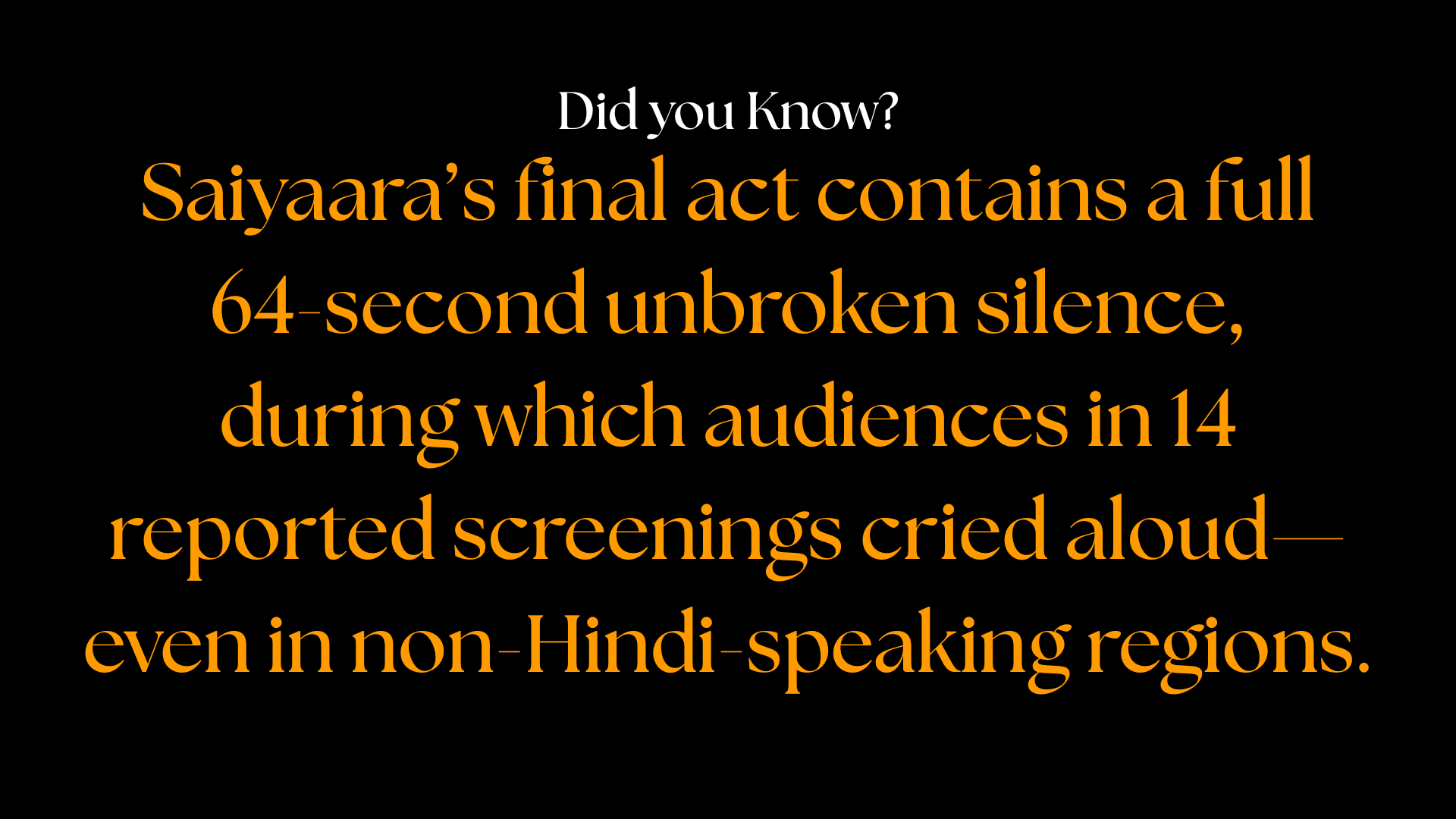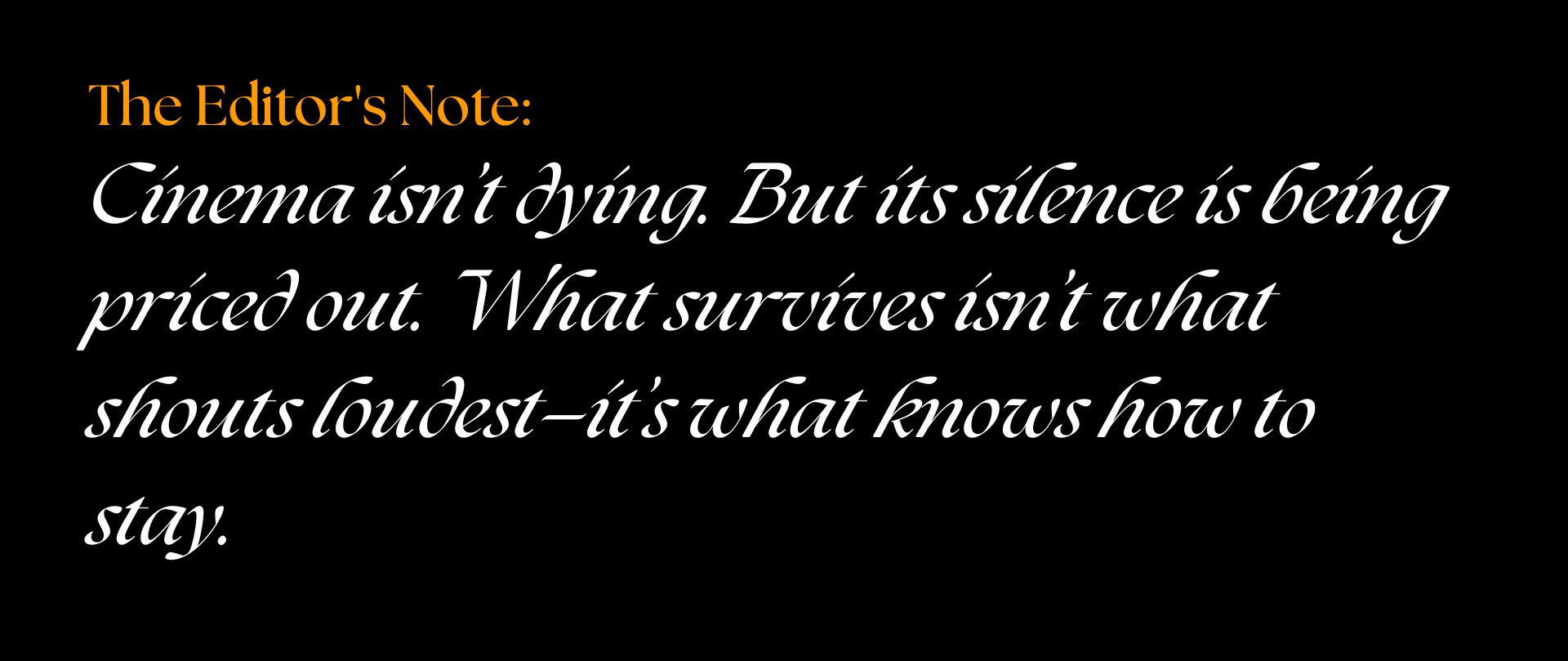Sacred Cinema in a Market-Driven Age

An Open Letter to Filmmakers Still Listening
There’s a split-second moment on set: breath held, camera rolling, time still. The frame waits—not just for action—but for meaning. That pause is where sacred cinema lives.
If you don’t feel it anymore, ask yourself: what are you even making?
1. WHAT’S REALLY RUNNING THE GAME
We say we want deep cinema. But what sells:
- Franchise dominance: While it’s true in Hindi segments, what’s also true—blockbusters aren’t the only metric that matters.
- Mid-budget winners: H1 2025 brought in ₹5,723 crore at India’s box office—a 14% year‑on‑year growth driven mostly by mid-tier films across languages.
- Theatrical revenue is king again: Over 70% of a film’s revenue in 2024 came from cinema halls—down from 48% in 2021—while digital sales stagnated around 23%.
Notice: louder doesn’t always win. Deeper does.

2. PROOF THAT QUIET RESONATES
Tourist Family (Tamil, 2025)
- Budget: ₹7 crore
- Gross: ₹90 crore (~650 %–1200 % ROI per reports)
- Director and lead cast unknown. It succeeded because the story lived inside people’s memories, not their feed.
Saiyaara (Hindi, directed by Mohit Suri)
- Budget: ₹45 crore; net ₹107 crore in just 4 days, ₹119 cr within the opening weekend.
- Opened at ₹24 cr on Day 1, climbed to ₹83 cr by weekend despite debut actors and then eclipsing star-led films like Kesari, Sky Force, Jaat.
- Viral audience reactions flooded social media: tears, fainting, emotional breakdowns in theaters not because it was loud, but because it landed emotionally.
Truth: Sacred filmmaking doesn’t need glossy PR. It needs resonance.
3. WHAT YOU'RE GIVING UP WHEN YOU CHASE NOISE
| Industry Practice | Creative Payoff Lost |
|---|---|
| Speed shoot (25‑30 days) | Time for emotional calibration, rehearsal, subtle performance penalty ([ET mid‑2024]+1Indiatimes+1Indiatimes+3+3EasternEye+3 |
| Script as commodity | Voice buried under brand pitches, test-group tailoring |
| Editing for “heatmaps” | Rhythm flattened. Silence—lost. Human attention—not earned |
| Music instead of meaning | Emotional cover-up replaces emotional weight |
When every film is calibrated to metrics—watchability, drop-off, retentions—you don’t make cinema. You make content.
4. SILENCE AS A PROOF POINT, NOT A STUNT
It’s easy to mock silence. It’s harder to prove its ROI.
But the data don’t lie:
- ₹5,723 cr in H1 box office, without a ₹1,000 cr movie, mid-range films broke through.
- Tourist Family beat even Chhaava and Dragon in profit percentage, a surprise that belonged to narrative, not budget.
- Saiyaara, despite newcomers, hit Hindi’s top 7 grossers of 2025 within days of release.
If real audience connection still means anything it’s in films that choose weight over reach.

5. HOW YOU PROTECT THE SACRED ON SET
- Revisit silence: Remove the background score. Feel the empty space between words.
- Edit for rhythm, not runtime. Let meaning emerge in pauses.
- Rewrite until it hurts: If the dialogue reads like a deck-liner, it’s not done.
- Respect every frame: Cinematography, tone, lighting—all must work toward feeling, not just look polished.
These are not marketing strategies. They are survival tools when speed is worshipped.
6. STILL BELIEVE THE AUDIENCE IS DULL? THINK AGAIN.
“Audience doesn’t care.”
A convenient myth. The truth:
- They streamed films for 8 trillion minutes in H1 2024 alone—95% on mobile.
- Digital media now beats TV for the first time, but theatrical still brings 70% of film revenue—because audiences crave communal depth, not just scrollable moment.
- OTT platforms like YouTube dominate in sheer reach (37.7% share), but storytelling with soul still moves audiences in halls.
Your audience isn’t gone. Your motives just got blurrier.
7. THE REAL DICHOTOMY: SACRED VS SOUNDTRACK
You have two choices:
- Chase speed, volume, brand, formula—master the noise.
OR - Stay in the ache, trust the silence, rewrite till meaning bleeds—master the frame.
There is no middle path. Sacred cinema is not a safe factory setting. It's activated only by craftsmanship under fire.

FINAL TRIGGER
When you line up your next scene, ask:
- Is this scene felt, or just seen?
- If the camera doesn’t move, will it still land?
- Did we choose to stay still when the machine demanded motion?
Because sacred cinema will never trend. It will linger.
It doesn’t live in echo chambers or algorithm loops; it lives in chest-tightening stillness you didn’t know you needed.
That is your playbook.
Sacred cinema is not a fallback. It’s the hardest, most necessary thing you’ll ever fight to make.
If you're still listening, forward this. The next generation needs it now.

